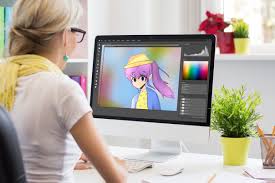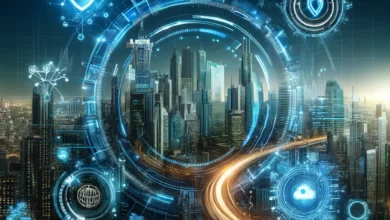From Concept to Creation: The Animation Pipeline in 2D and 3D Projects

Animation has become a cornerstone of the entertainment industry, marketing campaigns, and even education. Whether it’s a captivating 2D animated short or a visually stunning 3D blockbuster, the creation process follows a structured pipeline that transforms ideas into polished visual masterpieces. Understanding the animation pipeline is essential for clients seeking professional 2D animation services or 3D animation services, as it provides a clear roadmap of what to expect from the project.
Step 1: Ideation and Concept Development
Every animation project starts with a concept. This step involves brainstorming ideas, defining the message, and determining the tone and style of the animation.
For 2D animation services, the focus might be on creating hand-drawn storyboards or digital sketches that showcase the simplicity and charm of flat animations. In contrast, 3D animation services often involve creating mood boards and references for complex visual elements like realistic textures and lifelike movements.
A clear and compelling concept ensures the entire team is aligned with the project’s goals.
Step 2: Scriptwriting and Storyboarding
The script is the backbone of any animation project. It sets the narrative, dialogue, and pacing. Once the script is finalized, it’s time to create a storyboard—a visual representation of the script.
For 2D animation services, storyboards are critical because they illustrate how flat characters and backgrounds will interact. Similarly, in 3D animation services, storyboarding helps visualize the depth, camera angles, and transitions that will be achieved during production.
Step 3: Design and Asset Creation
In this stage, animators and designers create the characters, props, and environments. This step involves sketching, modeling, and texturing.
2D Animation Services: The design phase involves creating characters, backgrounds, and props in a flat, stylized format. Designers may use vector-based software like Adobe Illustrator or Photoshop to bring these assets to life.
3D Animation Services: In contrast, 3D projects require 3D modeling software like Blender or Maya. Designers build three-dimensional models and add textures and colors to make them look realistic or stylized based on the project’s requirements.
The assets created during this phase are foundational for the animation process.
Step 4: Animation
This is where the magic happens. In the animation phase, static assets are brought to life through movement and expression.
2D Animation Services: Traditional 2D animation involves frame-by-frame drawing, which can be time-consuming but offers a nostalgic and artistic feel. Modern techniques like rigging allow animators to move digital characters using predefined skeletons, speeding up the process without compromising quality.
3D Animation Services: In 3D animation, this phase involves rigging, keyframing, and motion capture. Animators create lifelike movements by defining key poses and interpolating the transitions between them. For hyper-realistic projects, motion capture is often used to capture real-life actor movements.
Both styles require a keen eye for detail to ensure movements are smooth, expressive, and aligned with the story.
Step 5: Lighting, Texturing, and Effects
For 3D animation services, this phase is crucial for enhancing visual appeal. Lighting helps set the mood of a scene, while texturing adds realistic details like fabric patterns or wood grains. Special effects, such as smoke, fire, or magical sparkles, add a layer of depth and drama to the animation.
In 2D animation services, lighting and effects are often hand-drawn or digitally composited, emphasizing stylistic choices that complement the flat aesthetic.
Step 6: Voice Acting and Sound Design
An animation isn’t complete without an immersive audio experience. Voice actors record the dialogue, and sound designers add music, sound effects, and ambient noises to breathe life into the visuals. A seamless blend of audio and visual elements ensures the animation is engaging and emotionally impactful.
Step 7: Post-Production and Editing
In this stage, everything comes together. Animators fine-tune the timing, transitions, and effects to ensure consistency. For 2D animation services, this may involve compositing all layers of the animation into a cohesive sequence. In 3D animation services, final rendering is performed to produce high-quality outputs with detailed lighting, textures, and effects.
Challenges in the Animation Pipeline
Every animation project comes with its own set of challenges. These can include tight deadlines, limited budgets, or technical difficulties.
For clients, partnering with a professional studio that offers 2D animation services or 3D animation services can mitigate these challenges. A reliable studio ensures the project stays on track while maintaining high-quality standards.
Why Choose Professional Animation Services?
Whether you need a vibrant 2D animation or a photorealistic 3D production, working with experts guarantees the best results. Professional animation studios have the expertise, tools, and creative vision to turn concepts into exceptional animated works. They also offer a collaborative approach, ensuring the final product aligns with your brand identity and objectives.
Final Words
The journey from concept to creation is a complex yet rewarding process. By understanding the animation pipeline, you can better appreciate the effort and artistry involved in creating 2D and 3D animated projects.
If you’re looking for professional 2D animation services or 3D animation services, Prolific Studio is your go-to partner. With a team of talented artists and cutting-edge technology, Prolific Studio transforms your ideas into stunning visual experiences. Whether you need engaging marketing content, an animated short film, or a compelling explainer video, Prolific Studio ensures your vision comes to life with unmatched quality and creativity.
Get started today, and let Prolific Studio bring your story to the screen!




